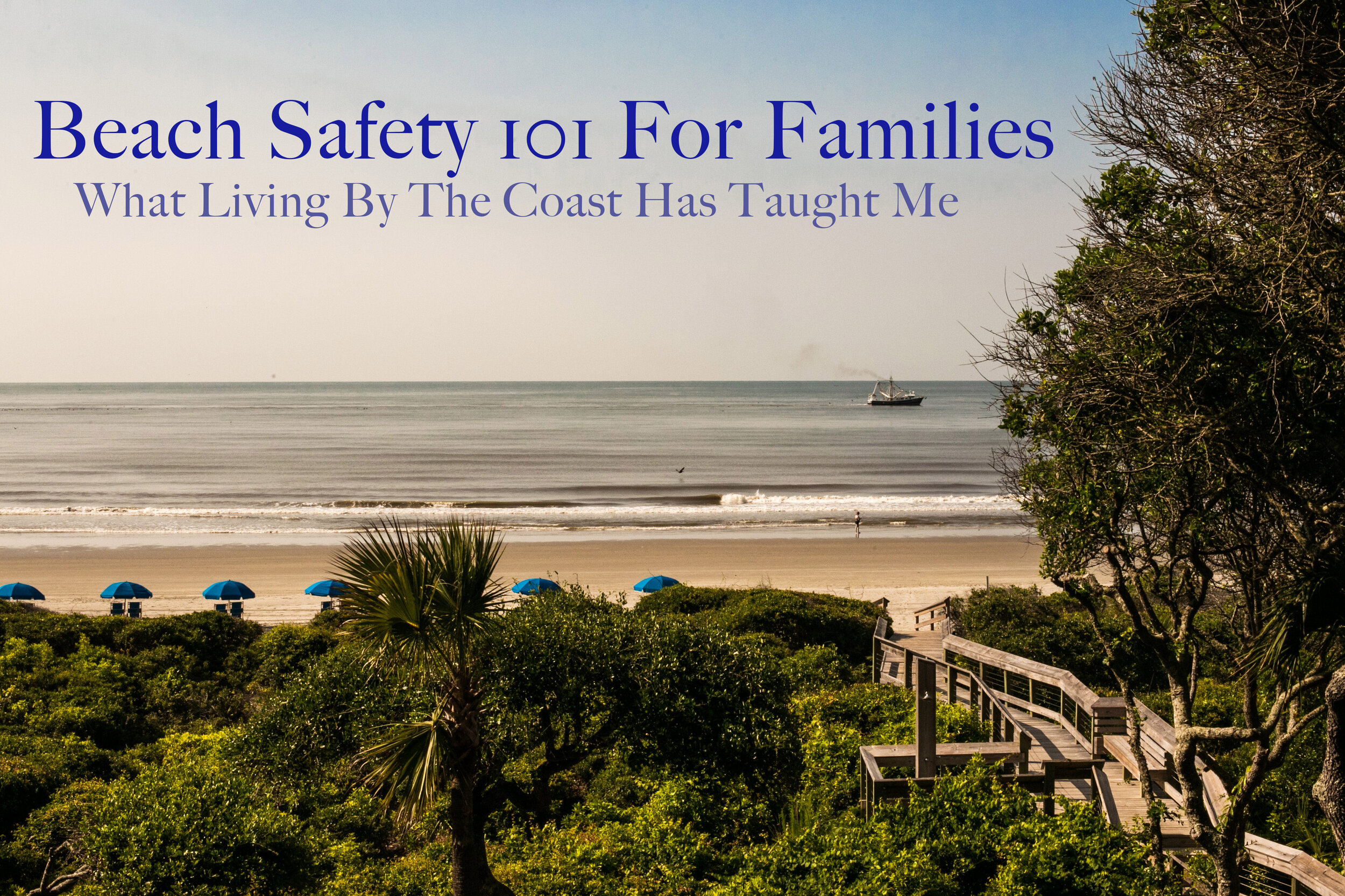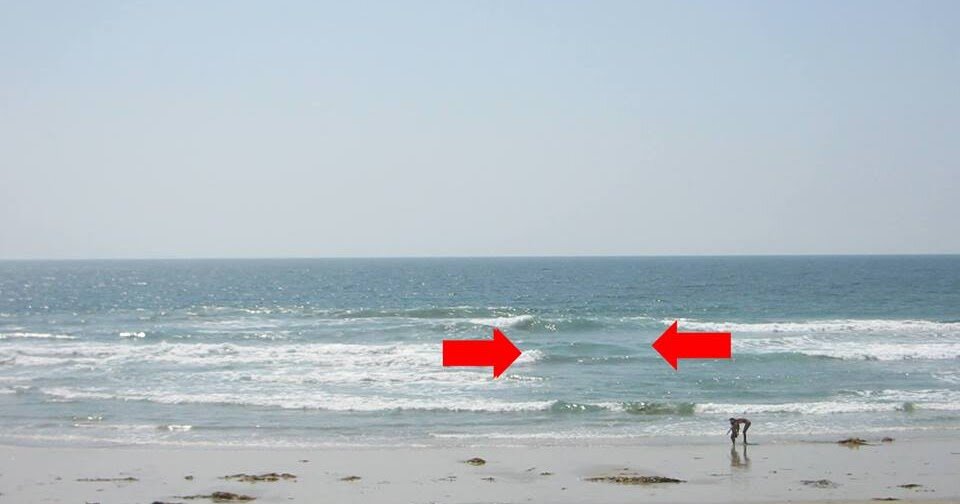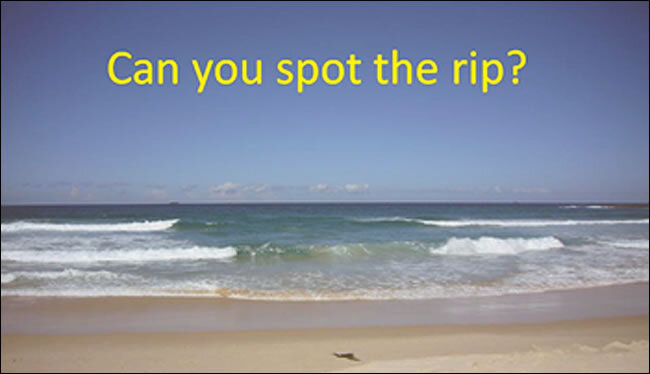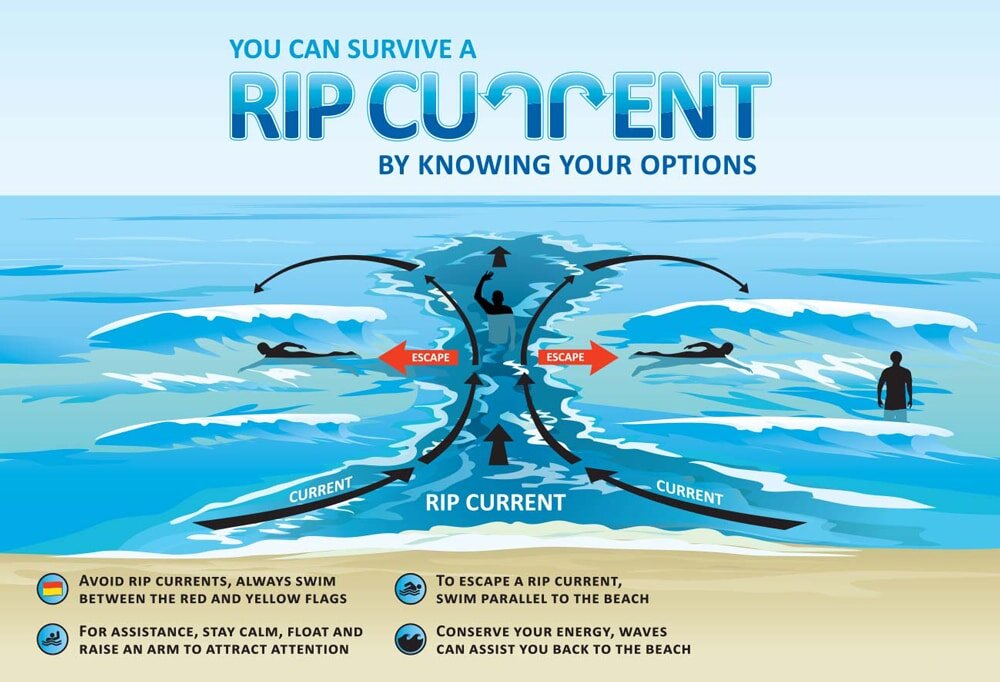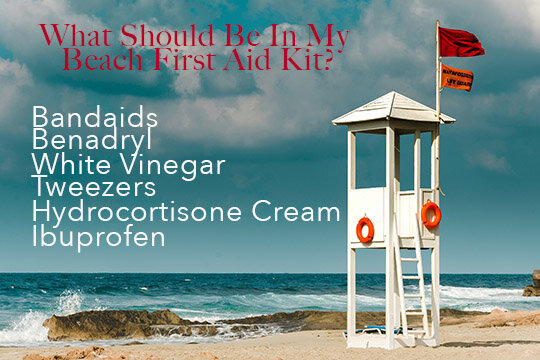You may not know this about me, but I used to be an ER nurse, and way before that I was a lifeguard. I have always loved knowing and learning about safety and how to prevent injuries. For me, knowledge is power. If I feel uneducated on a topic, I tend to feel more fearful about it. But the more I learn about the beach and ocean safety, the more prepared and comfortable I feel around the ocean water.
Over the the past 7 years of living by the coast, I have learned so much about our beach and ocean safety. Knowing these things has helped me enjoy the beach even more with my family! So, as beach season is finally here…and you may be planning to hit the beach soon, I thought it might be helpful to share with you what I have learned. That way you can feel more knowledgeable and comfortable at the beach this summer too!
Did You Know?
Some JellyFish Don’t Sting!
It’s true! Knowing this has absolutely made our beach experience way more enjoyable! Before knowing this, if we saw a jellyfish washed ashore we wouldn’t want to get in the water at all! Now I know what to look for.
A few Jellyfish that don’t sting:
Cannonball Jellyfish- our beach has these all the time. Although, I am told they can release a toxin that can cause cardiac issues…best just stay away from them, but don’t let them freak you out.
If you are planning a trip to Tybee Island, i recommend following Tybee Beach Ecology on Facebook! They inform you of what people are finding on the beach and what it is!
*Typically our beach sees more stinging jelly fish in July and August.
*consider making a jellyfish sting kit to have on hand if you go to the beach frequently and are not sitting by a lifeguard.
How To Spot A Rip Tide:
Low Tide, near sand bars, jetties, and piers is the most common time and place to spot rip currents.
A rip tide is an area or break in the water where waves are not crashing
Photo Courtesy of : www.blingdogsurfboards.com
Photo Courtesy of: Philippinebeaches.org
How To Swim Out Of A Rip Tide
Don’t panic! The rip tide will not pull you under, rather it pulls you out past the waves.
Swim parallel to the beach to get out of the current
Once out of the current, allow the waves to assist in pushing you back into shore
If someone is caught in a current, throw a boogie board or something that floats to them, call for help…do NOT go in the current after them. Instruct them to swim parallel to the beach.
Photo courtesy of : OBXbeachaccess.com
Other Helpful and Random Facts:
Do the Stingray shuffle
when walking in the water, shuffle your feet to allow stingrays to know you are coming and to avoid stepping on them.
2. Lifejackets
If you have kids that love the water and are not strong swimmers, don’t forget a coast guard approved lifejacket or swimmie!
3. Another Harmless Animal At the Beach
Horseshoe Crab- they look scary, but are not dangerous
photo courtesy of: https://www.nwf.org/Educational-Resources/Wildlife-Guide/Invertebrates/Horseshoe-Crab
Tips For Before You Get To The Beach
Sunscreen prior to getting to the beach
Sunscreen is most effective when applied 30 min before going outside
Reapply sunscreen every 2 hours (especially in the hours of 10am-2pm) when the UV rays are the harshest
Apply sunscreen even on overcast days! UV rays go through the clouds, and can still damage your skin.
Sunscreen is not recommended for babies 6 months of age or less. Keeping them covered and out of the sun is the best bet for them. I’ve raised 2 beach babies. I did not use sunscreen on them. Here is what I did:
Bring a stroller! It not only provides shade, but when the baby needs to nap, they can nap in the stroller and you can walk them around if they need movement.
Moses Basket, if you don’t want to bring a stroller…I have put my baby in a moses basket under an umbrella to nap as well. Click Here to shop using my affiliate link.
Keep baby in a sleeveless romper, or just a diaper.
Have a wide brimmed hat for your baby when you need to take them out of the shade.
Check the Tide
Is the tide going out, or coming in? The tide times change everyday, so a simple google search can help you know what the tide is in your location.
Tide is helpful to know:
where to set up your stuff?
-If the tide is going out, then you can set up closer to the water. If the tide is coming in, then you can set up farther away from the water (so you don’t have to move it several times)
High Tide- As the tide is coming in you will have the highest and roughest surf. Just be aware if you have little kids who don’t like big waves.
Low Tide- Rip currents (more on this above) occur more often during this time as water is breaking on the shallow sand.
3. Consider bringing a first aid kit.
If you plan on sitting near a lifeguard stand, this may not be as necessary. However, it is always good to be overly prepared! Above is what I recommend putting in it.
Tips For When You Get To The Beach
Know your location
What street are you parked by? If you get into trouble and need to call 911 this is helpful to know in order to tell them where to go.
Notice Where The Lifeguard Stand Is
What color is the flag flying at the lifeguard stand? What does it mean? Simply being educated about the conditions on the beach that day is helpful. If you don’t know what it means, and you don’t see a sign…ask a lifeguard!
If you are uncomfortable at the beach, I recommend always sitting near a lifeguard. That way you have help easily accessible should you need it.
Be Safe And Have FUN Friends! I hope these tips didn’t freak you out more! Haha! Instead, I hope your new knowledge leads you to a safer and more relaxed time at the beach! Knowledge is power!
On a lighter note…Want to know how to take better pictures at the beach? Click HERE!

